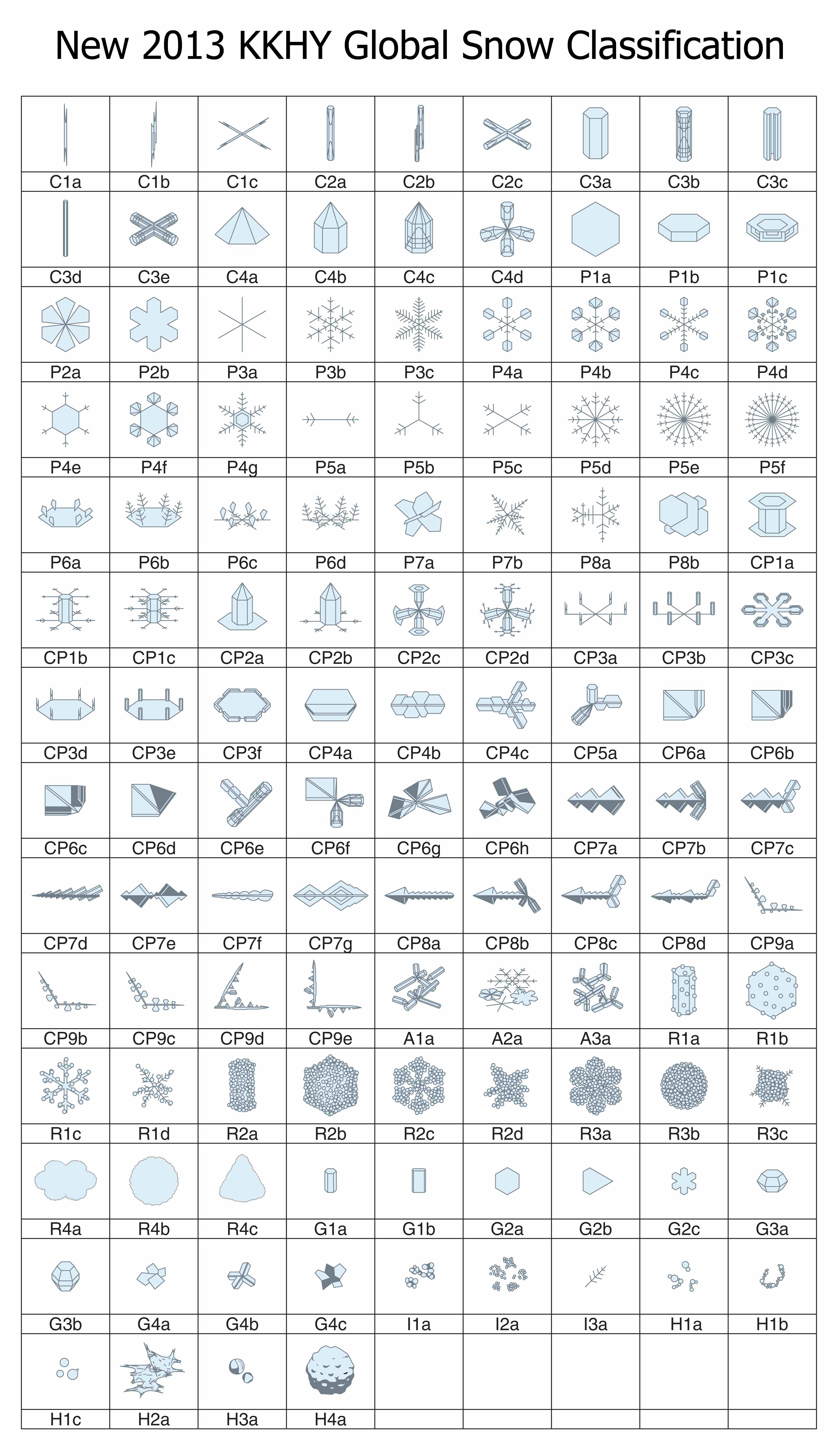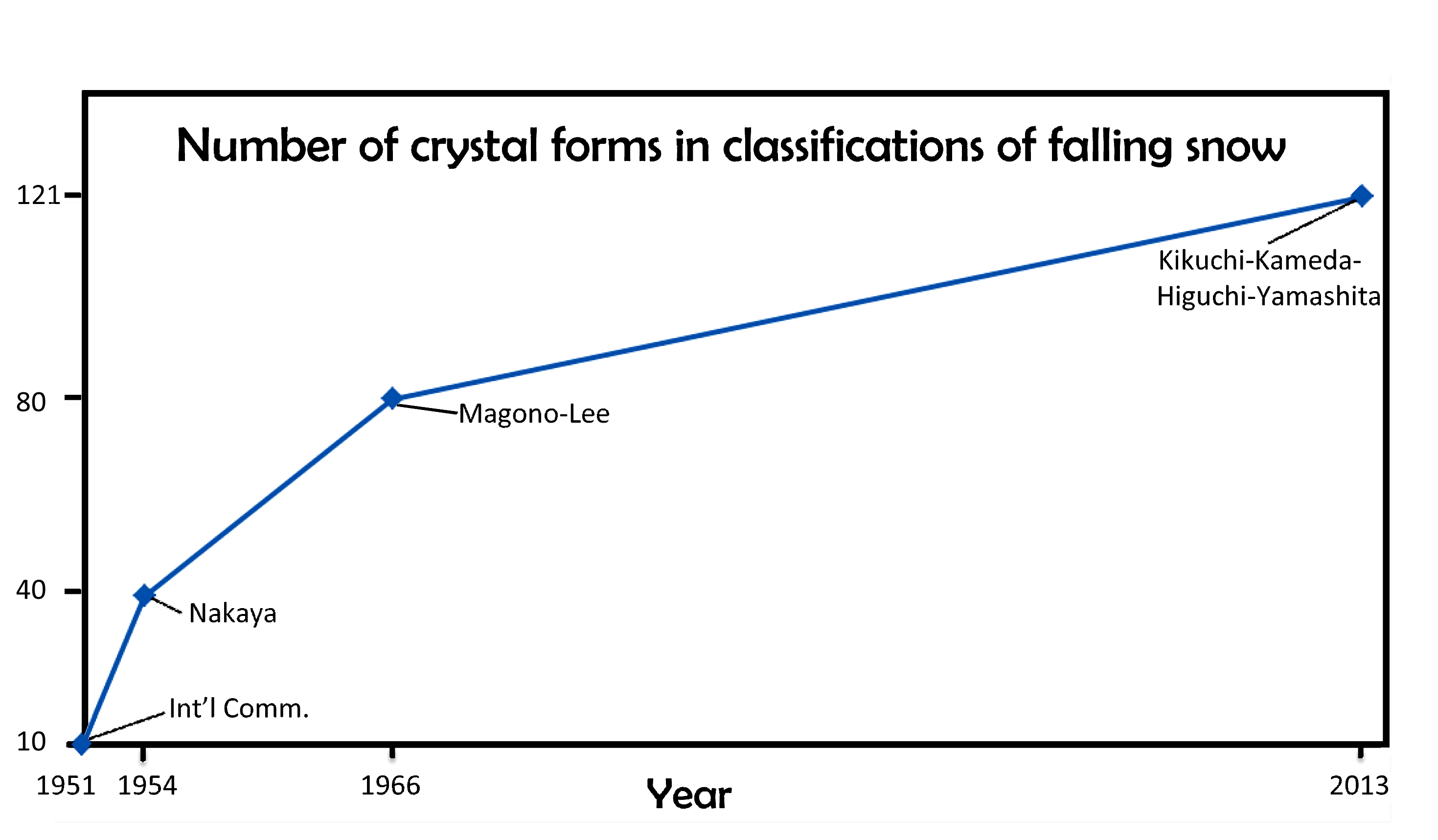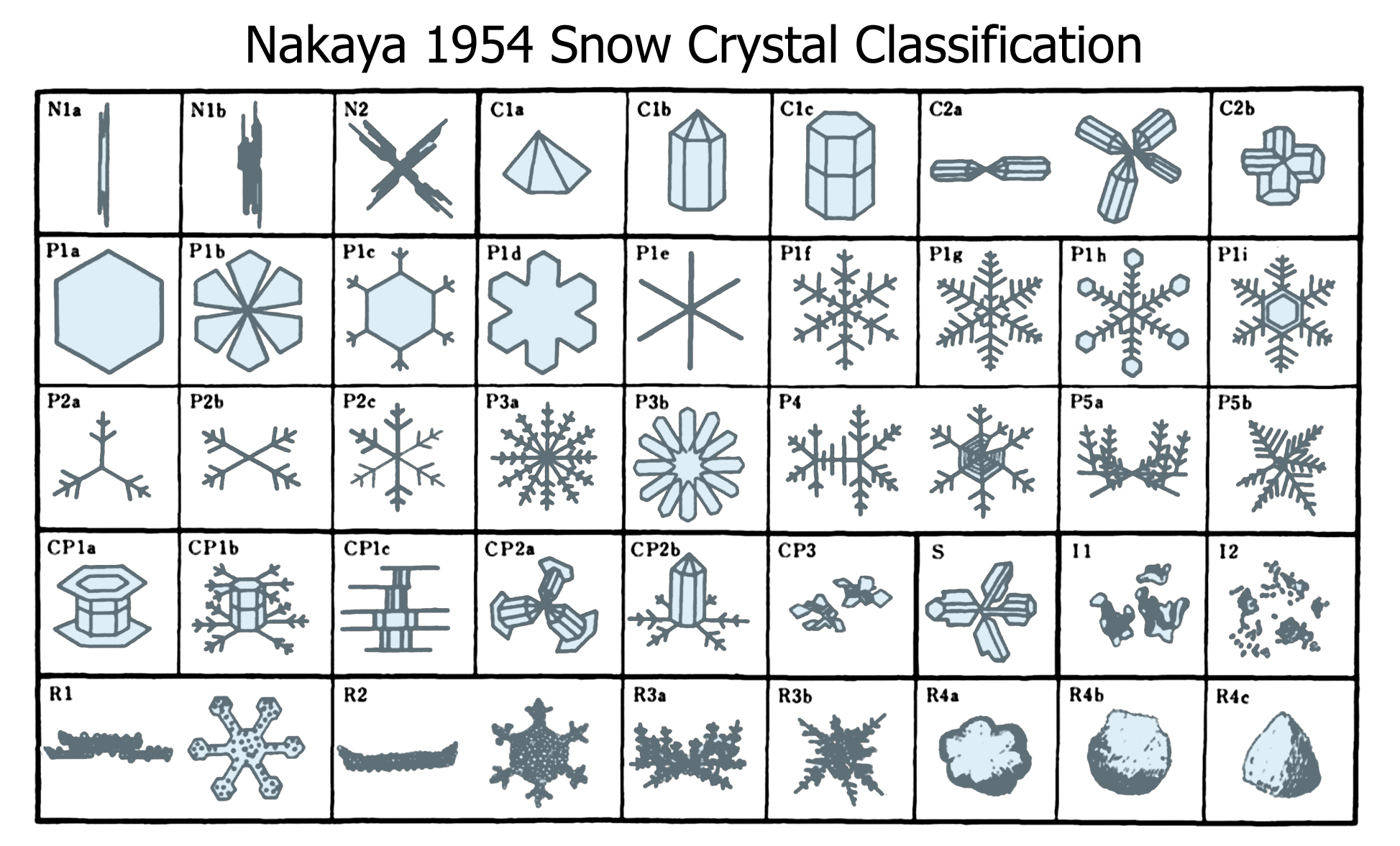| « Hoar that grows down and out | What makes the thick curvy lines in frozen puddles? » |
One hundred twenty one forms of falling ice: the new snow classification system
When I last wrote about the classification of falling snow and ice (02/14/2010), I discussed the 1966 Magono-Lee system. At the time, this system was the most recent one, and as such, the one generally used in meteorology. And to those who wondered how many types of icy precipitation exist, Magono and Lee would tell you 80 types.
Although 80 sounds like a lot, Magono and Lee did not include at least one very common type as well as a few other interesting types. This major omission was snow-crystal aggregates, generally known as “snowflakes” by meteorologists. These are individual snow crystals that have stuck together during their fall and arrive as large open clusters of crystals, often with tens–to–hundreds of crystals in a big, round blob. (To meteorologists, a snow crystal is not a snowflake; rather, a snowflake consists of many snow crystals. It is like the difference between a trundled rock and a landslide.) In fact, the snowflake is probably the most common type of snow precipitation in most areas that receive snow. Several other omissions of the Magono-Lee that I mentioned in my 2010 posting included spearheads, seagulls, and the both the 18- and 24-branched forms.
If you were waiting for someone to fix the classification, well wait no more: we now have a new classification scheme that includes all of these and more. The new system has not one, but three types of snow-crystal aggregate (snowflakes), which are given the symbol “A” (for aggregate). There is also four types of spearhead crystal (symbol “CP8”), five types of seagull crystal (symbol “CP9”), and both the 18- and 24-branched crystals (P5e and P5f). In all, the new system has added 41 new types. In one big graphic, here is the new system:
The architects of this new classification scheme published the above table in summer 2013*. There were four authors (K. Kikuchi, T. Kameda, K. Higuchi, and A. Yamashita), making it harder to name the system after the originators, but hopefully their names will become known, just as Magono and Lee’s have.
I will discuss various aspects of this new system in subsequent postings. But for now, I point out that the number of basic types has increased over the years, from 10, to 40, to 80, and now 121. When will it ever end?
Of course, it may just keep increasing. In fact, if we plot the numbers vs the years, and look at the pattern, we might conclude “never”.
In the 3 years between 1951 and 1954, the number of ice forms increased by 30. Then, in the 12 years from 1954 to 1966, the number increased by 40. Then, in the 47 years between 1966 and 2013, the number increased by 41. Each new classification takes about 4 times as long to come out as the previous classification (3:12:47), and each new classification adds about 40 new types. Moreover, since Nakaya, each classification has twice the number of authors as the previous (1:2:4), and they are all from Japan. So, upon extrapolating these trends, I will predict that the next classification will have 161 types of ice, will be published in the year 2201, by 8 authors, all in Japan, with the first author’s name starting with the letter “G”. I’ll let you figure out how I got the last item.
And just in case you yearn for simpler times, here is the original Nakaya classification scheme:
-JN
*Atmospheric Research 132-133 (2013) 460-472.


